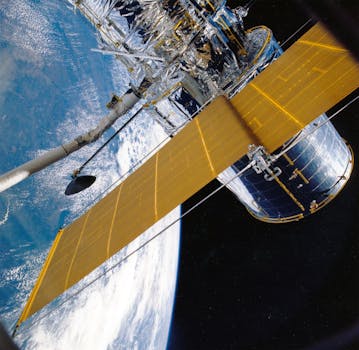LEO Satellites: Revolutionizing Global Connectivity with Low Earth Orbit Technology

LEO Satellites: Revolutionizing Global Connectivity with Low Earth Orbit Technology
LEO satellites, or Low Earth Orbit satellites, are a type of satellite that operates in a low Earth orbit, typically at an altitude of around 160 to 2,000 kilometers. This proximity to the Earth’s surface enables LEO satellites to provide low latency and high-speed connectivity, making them an attractive solution for various applications, including global communication, navigation, and Earth observation.
At the beginning of the LEO satellites era, the focus keyword LEO satellites has been widely used to describe the new technology that is changing the way we live and work. The use of LEO satellites has been increasing rapidly over the past few years, driven by advances in technology and the growing demand for global connectivity. One of the key benefits of LEO satellites is their ability to provide low latency connectivity, which is essential for real-time applications such as video streaming, online gaming, and virtual reality.
How LEO Satellites Work
LEO satellites work by transmitting and receiving data to and from Earth-based stations or other satellites. They are equipped with advanced transponders and antennas that enable them to communicate with multiple devices simultaneously. The data is then relayed to its destination through a network of ground stations or other satellites. LEO satellites are typically launched into orbit using a rocket and are designed to operate for several years before they need to be replaced.
The use of LEO satellites has several advantages over traditional geostationary satellites, including lower latency, higher bandwidth, and improved reliability. LEO satellites are also more resistant to interference and can provide better coverage in areas with high levels of interference. Additionally, LEO satellites can be used to provide connectivity to remote or underserved areas where traditional communication infrastructure is lacking.
Applications of LEO Satellites
LEO satellites have a wide range of applications, including global communication, navigation, Earth observation, and space exploration. They can be used to provide internet connectivity to remote or underserved areas, enabling people to access information, communicate with others, and participate in the global economy. LEO satellites can also be used for navigation, providing location information and timing signals to devices such as GPS receivers.
LEO satellites are also used for Earth observation, providing high-resolution images of the Earth’s surface that can be used for a variety of applications, including environmental monitoring, disaster response, and crop management. Additionally, LEO satellites can be used for space exploration, providing a platform for scientific research and experimentation.
Challenges and Opportunities
While LEO satellites offer many benefits, there are also challenges associated with their use. One of the main challenges is the high cost of launching and operating LEO satellites, which can make them less competitive than traditional communication infrastructure. Additionally, LEO satellites are subject to interference from other satellites and terrestrial systems, which can impact their performance and reliability.
Despite these challenges, the use of LEO satellites is expected to continue to grow in the coming years, driven by advances in technology and the increasing demand for global connectivity. The development of new technologies such as phased array antennas and advanced propulsion systems is expected to improve the performance and efficiency of LEO satellites, making them more competitive and attractive to users.
